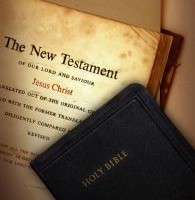From approximately 100-350 AD there was division over seven books in our New Testament. No one questioned the apostolicity of the four Gospels, the book of Acts, the thirteen letters of Paul, 1 Peter, and 1 John. After all, these were written by apostles, or with “apostolic approval.” For instance, Mark is considered to be [&hellip
Since Jesus and the Early Church already had the Old Testament Scriptures, how did the Bible grow to have the New Testament? If you recall, Jesus had twelve Apostles that He taught very deliberately and intensively; they were given the charge in Matthew 28:19-20 to “go and make disciples of all nations, baptizing them in [&hellip
As we saw previously, historical documents support the fact that the Old Testament was already in existence and canonized as the Word of God. However, some people still won’t accept those books as inspired Scripture. Maybe they don’t like the content of some of the chapters. Or maybe they don’t like the concept of a [&hellip
Having established the reliability of the Bible by referring to the oldest existing copies to verify what we have in our hands today, let us continue to examine another question: why are these sixty-six books special? In other words, what is the canon? The canon is defined as the accepted list of books with authority. [&hellip
In the previous blogs we saw how the Bible is the inspired Word of God, and has been reliably copied for centuries. The Bible is also inerrant, or without contradiction. Read it cover to cover and you will see for yourself. People have been trying to find contradictions for over 2000 years and haven’t been successful. The only thing [&hellip













0
Comments
Add